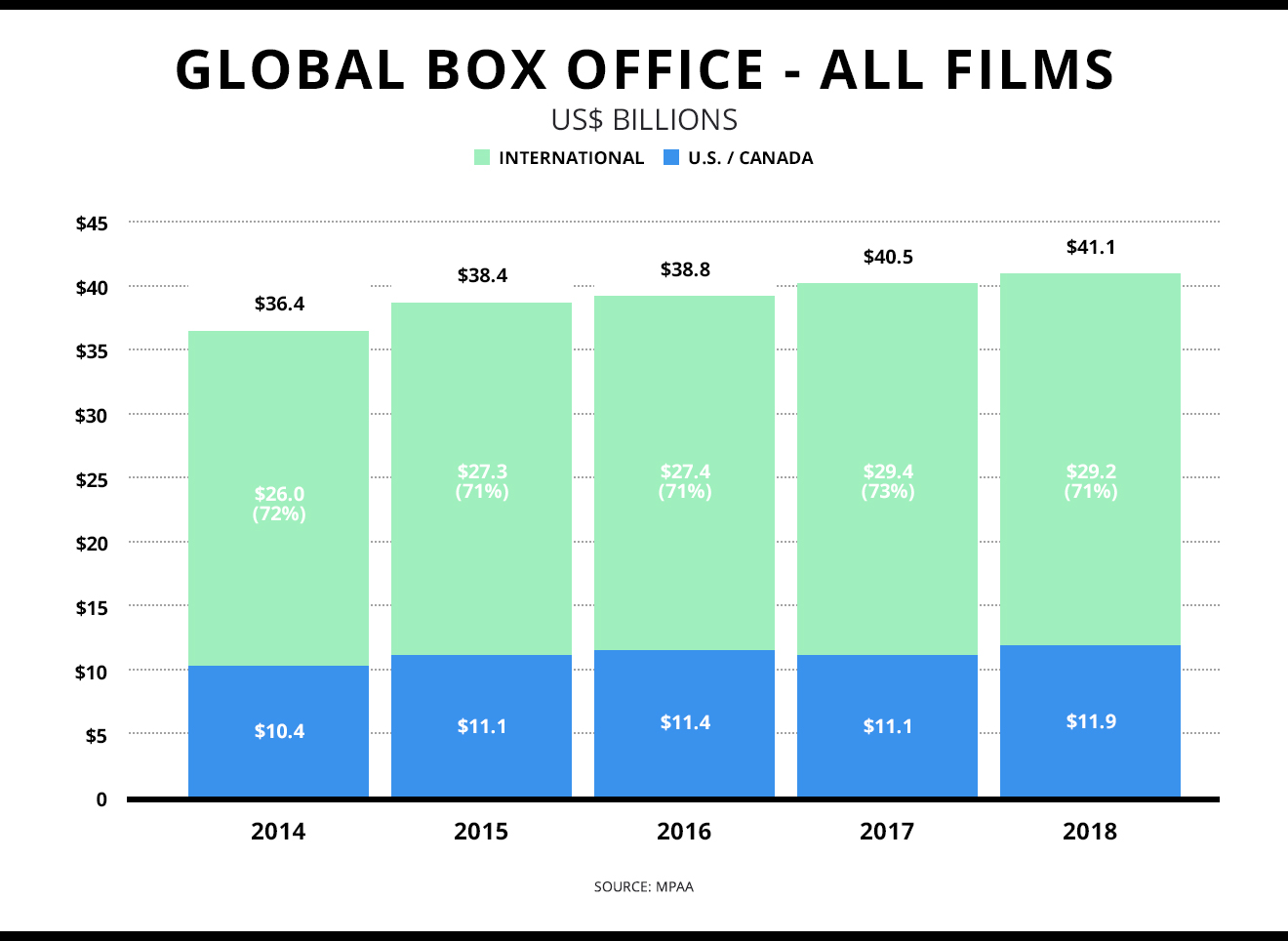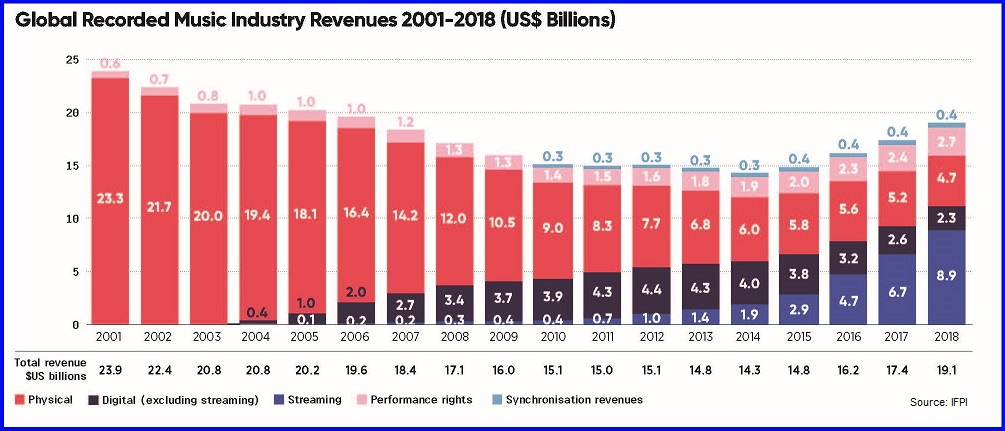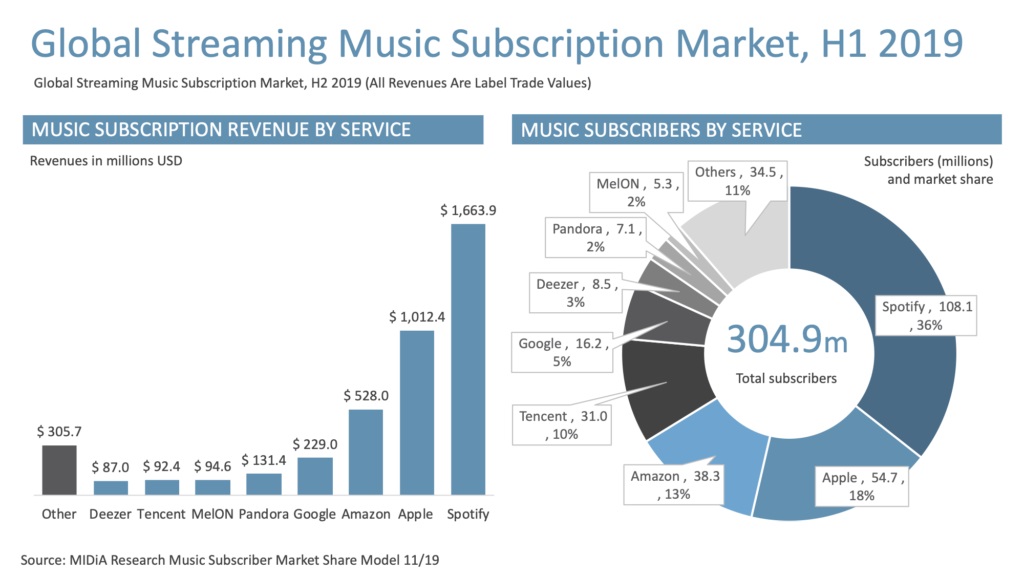AAMVD
DISTRIBUTION
ALLIED ARTISTS MUSIC & VIDEO DISTRIBUTION
Allied Artists Music Group, together with its motion picture counterpart, Allied Artists Film Group, distribute music and film projects through a variety of distribution networks. In some instances, the companies contract with major label and studio partners, depending on the territorial and marketing needs of the specific product being released. While "major" distribution is available to all Allied Artists operating companies, ALLIED ARTISTS MUSIC & VIDEO DISTRIBUTION (AAMVD) was launched by the parent company in the early 2000's.
As a music or film project is slated for release, experts from AAMVD, working in conjunction with specialized marketing teams, assess the most cost-effective distribution channel for each specific product. A first run feature film may warrant a wide release, using the major studio distribution system, while a direct to video film will realize greater profits using the company's in-house AAMVD distribution system, which is a world-wide platform, with far lower distribution fees. Music distribution is a rapidly evolving market. The vast majority of music revenue is now realized through music streaming and digital downloads, with physical product a distant third. Therefore, digital distribution is of paramount concern for music products. The recent increase in vinyl products has placed a new emphasis of physical distribution, although still trailing significantly behind the digital markets. AAMVD has honed music distribution to be both cost-effective and all-encompassing. Again, the company often partners with a major label for music distribution, depending on the individual product and marketing objectives. The distribution experts at AAMVD match the best distribution platform with each product released by any Allied Artists operating company.
AAMVD has been committed to serving artists and audiences since its formation. The Allied Artists name is synonymous with great music and film. We've been around long enough and are large enough to do the job efficiently, yet small enough to quickly adapt to a changing industry and needs of individual products we market.
Physical Distribution
AAMVD has been committed to serving artists and audiences since its formation. The Allied Artists name is synonymous with great music and film. We've been around long enough and are large enough to do the job efficiently, yet small enough to quickly adapt to a changing industry and needs of individual products we market.
Digital Distribution
AAMVD provides digital distribution to hundreds of online and mobile outlets and digital providers around the world. Our digital marketing team's vast experience permits well-integrated delivery to iTunes, Amazon, eMusic, and Spotify, just to name a few. Additionally, the AAMVD digital team provides sales, marketing, and store-front visibility options by honing and maintaining key relationships with digital providers globally.
International Distribution
AAMVD has an extensive distribution network outside U.S. markets. An international release must be made widely available, well-recognized and properly marketed. Matching the product with the right distribution channel is essential when exploiting rights Internationally — that’s why AAMVD licensees and sub-distributors in key territories. Having a range of distribution options allows AAMVD to choose the most suitable partner for each product or on a label by label basis.
Marketing
AAMVD’s marketing and publicity teams coordinate high-exposure promotions to maximize sales for both physical and digital titles. Coordinated marketing efforts including social/blog advertising, in-store promotions, listening stations, screenings, price and positioning programs, co-op advertising, exclusive offers, and more maximize visibility and marketing budgets. And our highly skilled publicity teams ensure key content is reviewed and talked about by publication that matter the most.
Design
AAMVD's graphic designers work closely with artists, producers, vendors and the marketing teams to develop beautiful, strategy-driven packaging. Graphic designers can also develop marketing assets, such as print ads, web banners, promotional emails, web sites, etc, as well as audio/visual assets (e.g., trailers, streaming audio clips, music videos), all in conjunction with the AAMVD promotional team's plan.
Motion Picture Distribution
Your movie is produced and now you want as many people as possible to see it, and probably with a theatrical release. That's sometimes a tall order with as many entertainment options available to consumers today, such as games, television, home video, music and sports. The motion picture industry in general has a lot of competition offering consumers compelling alternatives to watching movies in theaters.
First, let's recap the basics. A motion picture goes through six phases:
- First Phase
- Development
- Second Phase
- Pre-production
- Third Phase
- Production
- Fourth Phase
- Post-production
- Fifth Phase
- Marketing and Distribution
- Sixth Phase
- Exhibition
For this discussion we assume you've already gone through phases 1 through 4, or anticipate doing so prior to delivering it for distribution. We will therefore only address issues relating to marketing, distribution and exhibition.

Marketing
The motion picture industry uses the term “distribution” loosely, wisely including marketing as a component of the placement of movies in theatres and ultimately in ancillary markets, such as DVD, Video-on-Demand (VOD), and Television. Typical studio movies, including those produced by Allied Artists, combine production and marketing budgets from the start. During production, marketing division personnel develop a comprehensive marketing and distribution plan for the film. Marketing costs can be high, depending on the marketing plan adopted. Regardless of the cost, an effective marketing plan is an essential pillar of box office success. The cost of marketing continues to skyrocket. In 1980, the average cost of marketing a studio movie in the U.S. was $4.3 million ($12.4 million in today's dollars). By 2007, that amount increased to nearly $36 million. If the MPAA still tracked spending on Prints & Advertising (P&A), that number would be in the neighborhood of $40 million today for medium-size films like The Fault in Our Stars or Tammy. The MPAA stopped tracking P&A costs in 2009, but the average P&A spend in 2006 was $34.5 million compared to $25 million just seven years earlier. That's an increase of nearly 40%.
Blockbuster movies frequently have marketing budgets as high as 50% of the total negative cost. The vast majority of that spend occurs before the movie is released. Television, print, radio, and billboards make up about 75% of the total marketing budget with 40% or more, going to television advertising. The remaining budget is used to pay for trailers, posters, pre-release “behind the scenes” documentaries about the film, appearances and, in general, attempts to develop a “buzz” about the film before it is released. In an effort to combat out of control spending, producers – both big and small – struggle to find methods of creating that "buzz" in a manner that is cost-effective
Studios are increasingly looking viral marketing techniques to promote their films. Viral marketing consists of methods that employ social media and other electronic media campaigns to encourage people to pass along messages about a movie. 2007's Paranormal Activity had a budget of $15,000, but earned in excess of $193 Million worldwide, spawning a very successful franchise. Prior to Paranormal Activity was Blair Witch Project, an independent film that cost $60,000 to produce. However, the P&A spend was $20 million on marketing, which was still low by today's standards. By comparison, Paranormal Activity used a very unique marketing plan that screened the movie in college towns, generating an incredible demand, that audiences across the country could express by literally clicking on a website button market "Demand," asking for a screening in their area. In addition to creating a fever pitch buzz, the film was able to realize legitimate financial success with minimal targeted television advertising and a little online and radio advertising.
The moral of the marketing story is creating your own buzz by using a creative mix of social media and alternative advertising methods that keep the costs to a minimum. Or, simply poor $25 to $50 Million in P&A behind the movie and hope the advertising connects with the public. Here at AAMVD, we encourage the former. A producer who uses production funds wisely and markets a film in the most cost-effective manner possible, stands a better chance of recouping during the short window afforded a movie's theatrical engagement these days.
Distribution
Now that we've discussed the critical role cost-effective marketing plays, it's time to discuss the mechanics of putting eyeballs on your movie. No matter how good your movie is, without a distributor the film cannot see the light of day. A film distributor is either an independent company or a subsidiary of a recognized studio who acts as your negotiator with theater owners, known as exhibitors. Most major films are distributed by a studio’s distribution division. A smaller proportion of films are distributed by independent distributors (such as the Blair Witch Project discussed above). Distributors help you design and implement the marketing campaigns for channels and either specific territories or the world.
The distributor secures interest in your film with exhibitors by hosting industry screenings. Next, the distributor contracts with exhibitors on the profit split for each party. Third, the distributor must determine the production company’s share of the revenues and conduct an audit (if necessary) of the exhibitor’s ticket receipts. It's easy to see why the majors have distribution arms and the vital role they play.
Finally, the distribution process includes the MPAA movie rating assessment. Research has shown that a film's rating directly correlates to the revenue. On average, an R-rated movie is estimated to make about 12% less revenue than it would if it were not R-rated.

Exhibition
AAMVD enters into a standard contract with the exhibitor that sets forth the conditions for exhibition of the film. Those conditions include the profit sharing rules and the length of time the movie will be in the theater. Movies typically run from 4 to 8 weeks at present, but the run may be adjusted based on how well the movie is performing. Holdover clauses also allow movies to be held longer than the standard time.

There are a number of types of deals that can be made between a distributor and an exhibitor. The type of deal AAMVD may structure for your movie depends on each movie’s perceived revenue potential at the box office and the relative bargaining power. The ultimate deal is also dependent on the number of days that the movie runs, when it opens and a number of other factors.
How profitable are concessions for the exhibitor? Analysts say that there is an 85% gross margin on concessions in theaters. While concessions are approximately one-fifth of revenues, they account for about 46% of profits. Theaters depend enormously on their concessions and some have quipped that a theater is actually a restaurant that happens to show movies. So now you know why a bag of popcorn costs $4.50 and a Coke $5.
As shown above, the largest exhibitors are major theater chains. Across the top five chains, the average number of screens per theater is just under 12. The advantage of these large chains is that they can show many copies of the same movie simultaneously.
The two most pressing issues for exhibitors today are the pressure to install digital technology in their theaters and to provide a better movie-viewing experience for customers. The major theater chains have all gone digital, leaving the small independent theaters with legacy projection systems. For the most part, studios have stopped providing actual prints, opting instead to deliver movies in digital formats. As a result, the small mom and pops theaters are often relegated to showing classic films still available in print format. In some instances, AAMVD uniquely takes strategic advantage of these independent theaters to provide alternative theatrical exhibition for under financed movies that deserve "their day in court."
Of course, digital cinema has a number of advantages for distributors since movies can be shown in theaters via an exceptionally high-resolution format, as well as satellite transmission. Of course, distributors and producers save a lot of money on film. Prints generally cost about $1,000 per print. A wide release is quite expensive, but a limited release to independent theaters of prints may be a cost-effective method of generating a "buzz" for a movie in advance of, or in the hope of, a wide release.
Exhibitors experienced a three year slump that ended in 2006 as chains began converting to digital and upgraded the movie-going experience. Indeed, the global box office hit a record $38.6 Billion in 2016, and 2017 is on track to maintain an upward trend.
THEATRICAL RELEASE AND THE BOX OFFICE
A film’s theatrical release and its opening weekend box office performance is critical, since the numbers from that three-day period establish most of the subsequent deals for DVD, international distribution, cable and satellite television, and free television. Having said that, producers should keep in mind that the entire global theatrical run accounts for only about 20% of the total revenues for a film released in today’s environment. The rest of the revenues proceed from other forms of distribution including DVDs, television, etc. It is for that reason that some producers and studios opt out of the expense of a theatrical run and go "direct to DVD." Regardless of the reason or the point in time of an initial release, every movie eventually finds its way to ancillary markets; often accounting for as much as 80% of the total revenue for a theatrical release. For that reason, AAMVD Home Video concentrates on those ancillary markets, often being the recoupment vehicle for a movie that performed poorly during exhibition, or perhaps the only vehicle for recoupment in the case of a Direct to DVD release.
Music Distribution
As the global distribution arm of Allied Artists Music Group — one of the industry’s premier group of labels — AAMVD proudly provides independent labels and artists with specialized marketing, advertising, sync licensing, video monetization, performance rights services and much, much more! AAMVD's team of seasoned industry professionals possess established relationships around the world that permit the new artist to rise above an otherwise cluttered field. AAMVD connects talent to fans, regardless of where they may be. That's the AAMVD difference!
AAMVD Music Distribution offers unparalleled worldwide services, including:
- Customized label services by release and territory
- Worldwide manufacturing, sales, distribution, and retail marketing, including worldwide account management of physical product with key retailers
- Worldwide sales, distribution, and retail marketing including worldwide account management for key digital retailers
- Radio promotion, online marketing, publicity, and marketing services managed by our United States and International staffs located in the United States and London
- Product management including creative development, coordination, strategic partnerships and execution of tailored marketing and promotional plans
- Dedicated administration of all aspects of publishing, including sync licensing
- Consolidated worldwide accounting via one convenient, easy to understand statement
How Music Distribution Works
Distribution – which is the way recorded music gets into the hands of consumers – is broken into two distinct categories – Physical and Digital. Physical distribution is the manufacturing, marketing and placement for sale of physical products, such as CDs and the now resurging vinyl record, e.g. Best Buy, Walmart, Target. Digital distribution is the placement for sale of digital download files with the more than 400 digital sales and streaming portals located around the world, e.g. iTunes, Amazon, Spotify, Pandora.
Traditionally, distribution companies sign agreements with record labels who then resell the label's products through both Physical and Digital channels. The distributor charges a fee from each physical unit and download sold. After the distribution fee is deducted, the distributor then pays the remaining balance to the label. These days, distributors usually expect record labels to provide them with finished, ready-to-market physical products, but may offer a "P&D" deal.
P&D stands for pressing and distribution. Under this type of arrangement, the distributor pays the manufacturing costs of an album up front and keeps all the income from album sales until that initial cost of pressing is recouped.
With the advent of the digital medium, the music industry began a radical shift from physical to digital download and increasingly, digital streaming. In the early days of digital, copies of albums were almost exclusively made available for free on file share sites like Napster and the original MP3.com. A once $40 Billion a year business dwindled to a mere shell of itself, while the Recording Industry Association of America and its counterparts around the world began cracking down on "bootleggers" around the world. The industry as a whole had to adapt, shifting from a physical product centered business model to one that recognizes and services the digital marketplace.
While some may argue that music distributors have a reduced role in today's digital age, the truth is that simply making digital product available isn't enough. Consumers cannot purchase any product, music or otherwise, if they aren't aware of its existence. Just as important is the ability to service the more than 400 digital outlets located around the world. Today's digital marketplace relies less on regional success, creating global trends when the emphasis is placed on international markets. That's not to say that domestic and regional considerations should not play a role; they are essential. However, conversion from listener to buyer is generally "trend" related, sweeping global marketplaces when hits emerge.
For this reason, AAMG works closely with record labels, both big and small, to raise awareness of music products, so current and future fans are afforded the opportunity to engage. Some retail outlets continue to sell physical album copies. Most maintain competing online digital download outlets.
There's an exception to every rule. Growth in physical distribution continues for specialty music markets, such as classical, Latin, and jazz. Yet, other labels and distributors prove successful by focusing on certain regions and servicing their music locally.
AAMG services the world, including your local retail outlets and any of the digital download and streaming sites you may enjoy. No matter what country you may be in, AAMG has music available for sale, regardless of the medium!


